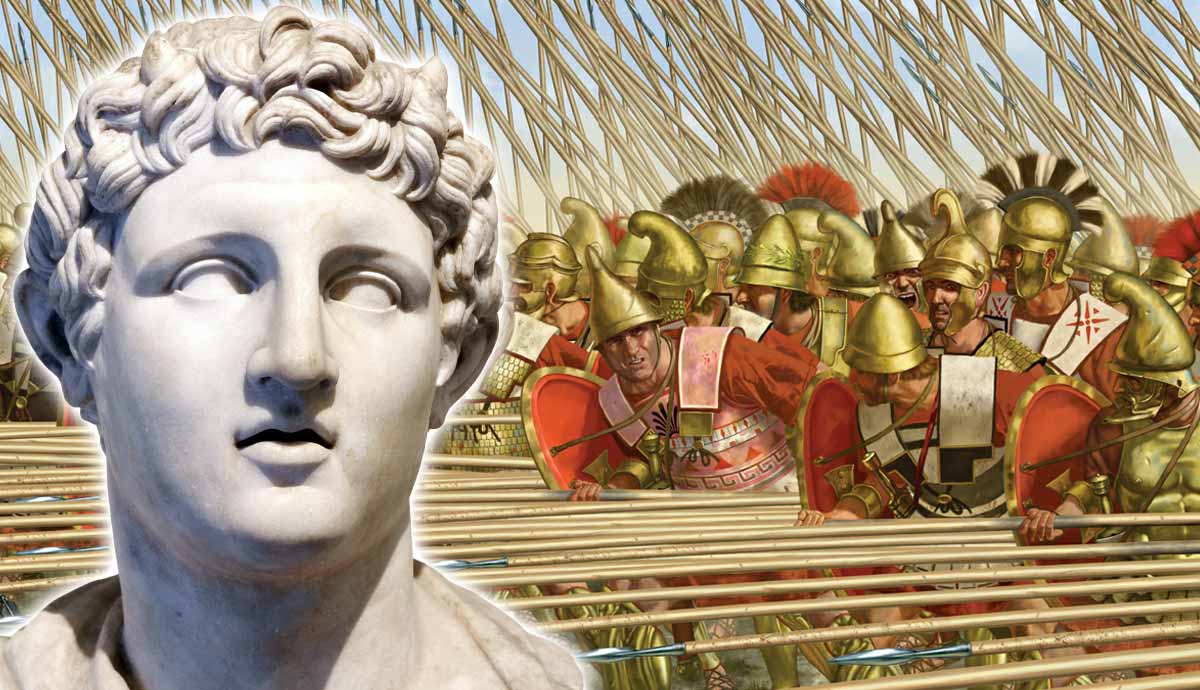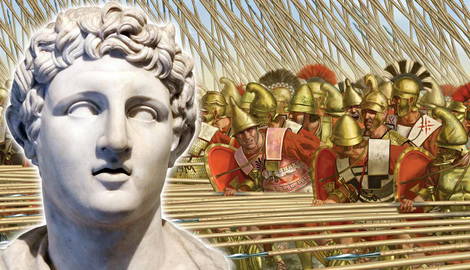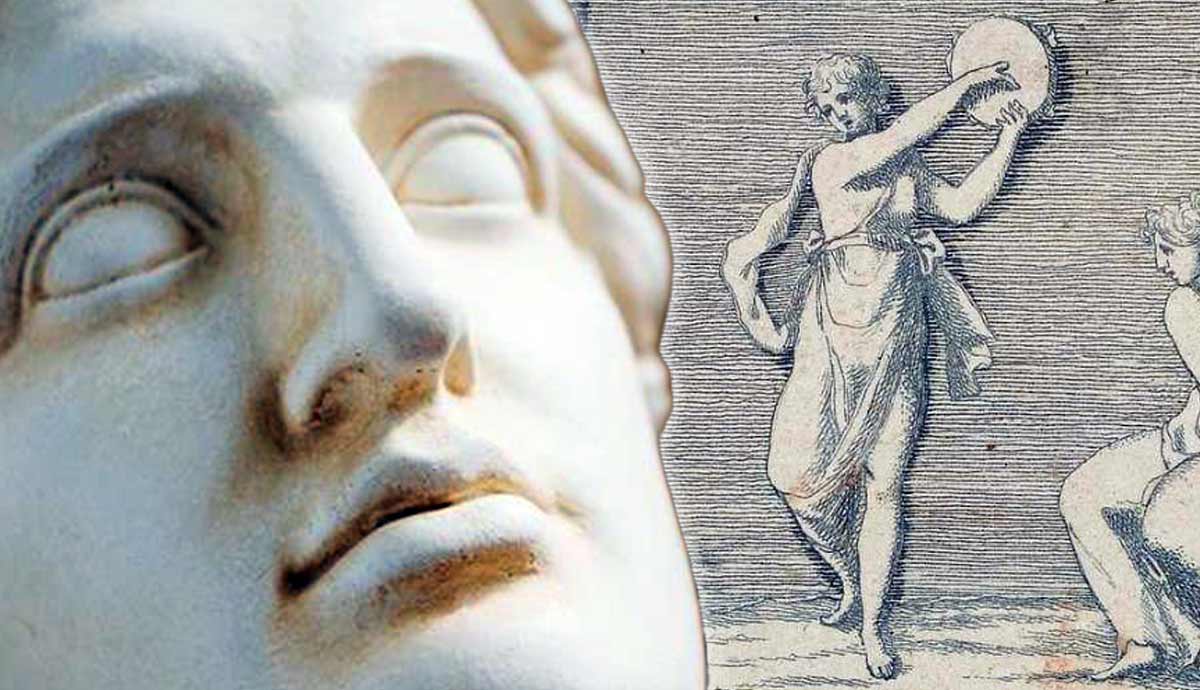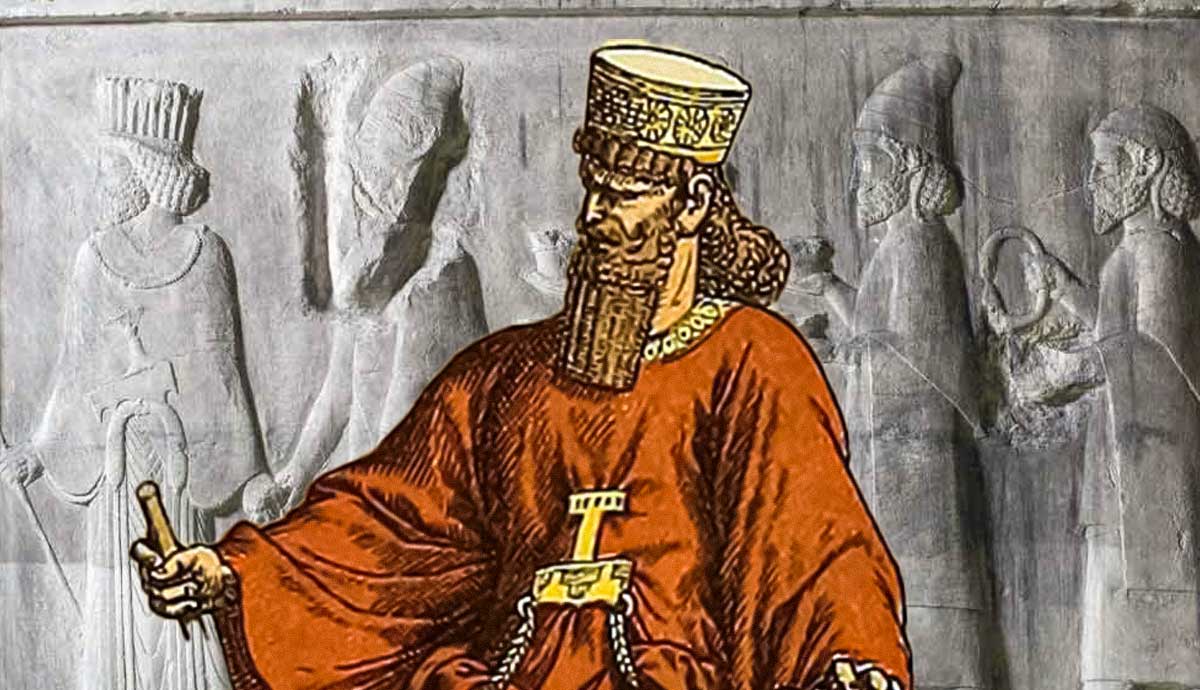
Following the death of Alexander the Great, his generals fought for control of the various parts of his empire. Despite taking control of the Macedonian homeland, the Antigonids are less famous than the Ptolemies of Egypt and the Seleucids of Asia Minor. Meet the rulers of the Antigonid Empire, which spanned various extents of the Eastern Mediterranean for almost 150 years, until their territory was subsumed into the Roman Empire.
Kings of the Antigonid Dynasty
| King | Reign |
| Antigonus I Monophthalmus | r. 306-301 BCE |
| Demetrius I Poliorcetes | r. 306-285 BCE |
| Antigonus II Gonatas | r. 283-239 BCE |
| Demetrius II Aitolicus | r. 239-229 BCE |
| Antigonus III Doson | r. 229-221 BCE |
| Philip V | r. 221-179 BCE |
| Perseus | r. 179-168 BCE |
The Founders: Antigonus I & Demetrius I

The Antigonid dynasty emerged out of the adventurous and dangerous world of the Wars of the Successors following the death of Alexander the Great in 323 BCE. Antigonus I Monophthalmus (the one-eyed) and his son Demetrius I shaped the Hellenistic world through decades of war.
Antigonus was one of the Macedonian nobles transformed into a warlord by the campaigns of Alexander. Having been appointed governor of Phrygia (modern Turkey), Antigonus turned the central part of Alexander’s empire in Asia Minor, Syria, and Mesopotamia into the first Antigonid power base. Following Alexander’s death, it looked like the Antigonids would become the main power in the Macedonian world.
The life of his son, Demetrius, is one of the most dramatic and colorful stories from the ancient world, as he suffered many changes of fortune. Notable setbacks came at Gaza in 312 BCE and at Rhodes in 305 BCE, but were offset by victories on Cyprus in 306 BCE and the capture of Athens in 307 BCE.

His victory at Cyprus proved to be a defining moment in Hellenistic history. Since the death of Alexander, the warlords lived with the fiction of a united empire, ruled jointly by Alexander’s successors. By 306 BCE, Alexander’s son, Alexander IV, was long dead, and the overall throne remained empty. The victory on Cyprus was Antigonus’ moment to proclaim himself and Demetrius kings. Other warlords soon followed, formally fracturing Alexander’s empire and creating the fundamental Hellenistic geopolitical order.
The Antigonids’ growing power was a threat to the newly crowned kings around them. A coalition led principally by Seleucus and Lysimachus confronted the Antigonids at the Battle of Ipsus in 301 BCE. Antigonus, at the age of 81, died in the battle. Demetrius escaped, but the Antigonids were now reduced to a fleet and some coastal cities and islands.

From the depths of defeat, Demetrius somehow recovered. Demetrius gradually rebuilt his power and made new alliances. By 294 BCE, he was king in Macedonia. For the first time, the Antigonids ruled the ancestral homeland. Demetrius, though, was ill-suited for the job. His greater ambition to reclaim as much territory as possible meant Macedonia was treated as a source of money and men. His tendency for aloofness and extravagance alienated his subjects. After being attacked by a new coalition, Demetrius was ousted and again became a wandering king. Following an unsuccessful invasion of Asia, he finally surrendered to Seleucus in 285 BCE, dying in comfortable captivity a few years later.
At Demetrius’ death, the Antigonids seemed to be one of the many casualties of the Wars of Successors. Their empire was little more than a few bases, and the two founders were no more. Their legacy and dynasty, however, endured.
Settling in Macedonia: Antigonus II Gonatas

The Antigonids’ prospects after Demetrius’ death looked poor. Demetrius’ son, Antigonus Gonatas, was in his mid-30s and clung on to the remaining Greek garrisons, but he was a king without a kingdom. Few could have guessed a long and largely successful reign lay ahead.
The origins of the nickname Gonatas are uncertain. It may have meant something in the Macedonian dialect of Greek, but there’s no agreement on what. Other aspects of Antigonus II’s reign are also obscure. The middle decades of the 3rd century BCE are poorly documented. A broad outline of his life is possible, but the dating of key events is disputed.
Antigonus saw Macedonia at its lowest ebb. Despite Alexander’s success, Macedonia suffered. Between 323 BCE and 276 BCE, Macedonia saw 12 rulers. The last ruler, Ptolemy Ceraunus, was killed during the Celtic invasion in 280-279 BCE. Antigonus’ defeat of a Celtic band in 277 BCE gave him the legitimacy to claim the throne. Initially, he also seemed doomed to another inglorious failure, having been briefly driven out by Pyrrhus of Epirus from 274 BCE to 272 BCE. However, once back in Macedonia, Antigonus consolidated his position, setting up a century of Antigonid rule.

The stability Antigonus provided allowed the restoration of Macedonia. The Antigonids were always poorer and weaker than their main rivals, but Macedonia was large and rich by Greek standards. Timber, mines, abundant agricultural land, and prosperous cities all helped. At least as long as that wealth was not wasted on overseas adventures or plundered by neighbors. Antigonus is credited with reforming the Macedonian state and creating structures of local administration. He is said to have avoided the reputation for aloofness which doomed his father’s reign. Furthermore, he showed a very active interest in philosophy, being close to Zeno of Citium and a number of prominent Stoics.
But Antigonus has been criticized for his policy in Greece. Key cities, principally Athens and Corinth, were occupied and garrisoned. From Antigonus’ point of view, this was necessary as Greek cities often sought autonomy. The policy was expensive, and the resentment it caused prompted a backlash. Despite defeating Athens and Sparta in the Chremonidean War, by the end of Antigonus’ reign, the Aitolian and Achaian federal states had freed much of central and southern Greece. In 243 BCE, the strategically vital fortress of Acrocorinth fell to the Achaians.
By the time of his death in 239 BCE, Antigonus II had ruled Macedonia for more than thirty years. While his policies in Greece were questionable, he rescued Macedonia from its lowest ebb, and his reign was considered a domestic success.
Losses and Recovery: Demetrius II & Antigonus III Doson

The relatively short reigns of Demetrius II and Antigonus III represent the middle years of the Antigonid dynasty. Macedonia continued to be stable and secure. The main challenge was trying to reassert Macedonian influence over Greece.
The ten-year reign of Gonatas’ son Demetrius II Aitolicus is little known. As the nickname, Aitolicus, suggests, much of his reign involved conflict with Aitolia as well as the other leading Greek state, the Achaian. Aitolian and Achaian progress in central and southern Greece eroded Macedonian influence. However, Demetrius did make some progress, especially in central Greece, before dying during an invasion of northern Macedonia by the Dardani in 229 BCE.
Demetrius had a son, Philip, but in 229 BCE, he was only a child. In this delicate situation, the Macedonians elevated Antigonus III Doson, a member of another Antigonid branch, first as regent and later as king. This was a difficult moment for the Antigonids. Not only was Macedonia challenged in the north and the south, but there was the potential for rival claims within the dynasty. Antigonus’s competent leadership and his early death in 221 BCE ultimately resolved the issue.

Antigonus’s ability to step in without stepping on Philip was praised as a continuation of a positive Antigonid tradition. Many Hellenistic dynasties struggled to contain internal disputes between rival family members. At least until the later stages of the dynasty, the Antigonids largely avoided such destructive patterns through a low number of surviving sons and a sense of dynastic loyalty. The pattern was set by Antigonus I and Demetrius I, who were said to have a very close father-son relationship and trusted each other completely. This tradition of harmonious family relations prevented the dynasty from imploding and helped it overcome difficult moments.
Antigonus III’s military abilities also helped, as did changes in the balance of power in Greece. The invasion from the north was swiftly defeated and helped elevate Antigonus from regent to king. Soon, events in the south also turned Macedonia’s way. The alliance between the Aitolians and Achaians was brief. In the mid-220s, Achaia found itself losing ground to a resurgent Sparta. Unable to stop them, the Achaians turned to their former enemy, Macedonia. Antigonus marched south and defeated the Spartans at the Battle of Sellasia in 222 BCE. The price was the return of a Macedonian presence to the Peloponnese and, in particular, the key fortress of Acrocorinth. Antigonus died following an invasion of the north in 221 BCE, while Macedonian influence in Greece was at its highest in decades.
Peak Before the Fall: Philip V

Though only a teenager when he took the throne in 221 BCE, Philip V proved himself a capable ruler over the next 40 years. However, the world was a very different place by the end of his reign.
As a young king, Philip was tested early. Demetrius II and Antigonus III rebuilt Macedonian influence in Greece by changing policy. Expensive garrisons and unpopular repression were, mostly, replaced by alliances. With the Achaians as the centerpiece, the Macedonians now led an alliance of Greek states. This alliance performed well in the Social War (220-217 BCE) against the Aitolians. Philip himself achieved the difficult task of invading Aitolia, but the war was inconclusive and swiftly ended when momentous news arrived from Italy.
Roman power had already spread in Italy and reached across the Adriatic. This was not yet a cause of concern for any Hellenistic state, but when Hannibal invaded Italy and won a series of victories over Rome, new opportunities arose. There is no settled opinion on responsibility for the series of Macedonian Wars that followed. It is possible to see an ambitious Philip seizing the moment and going to war with a weakened Rome, perhaps even imagining an invasion of Italy. At the same time, he may have had the more limited aim of removing Roman influence east of the Adriatic.

Whatever the initial motivations, Philip set Macedonia on a course for a fateful collision with the Romans. The First Macedonian War saw Philip ally with Hannibal, but with neither ally able to aid the other. To distract Philip, the Romans allied with the Aitolians and conducted a limited war in and around Greece. The war was long but indecisive and ended with a fragile peace. Philip continued to seek new theaters of operations following the war, particularly in Asia Minor. This, however, increased the tension with Roman allies such as Pergamon and Rhodes, and contributed to the Second Macedonian War.
At this point, the Macedonian alliance system broke down. Rome already had significant Greek support in Aitolia, Pergamon, Rhodes, and Athens. The Achaians now defected to Rome, and the Second War pushed into Macedonia’s borders. The war came down to a single day’s battle at Cynoscephalae in 197 BCE. Philip’s defeat ended Macedonia’s time as a major power, but both country and king survived intact. Philip ruled for almost 20 more years, walking a careful line between rebuilding Macedonia and not provoking Rome.
End of the Antigonids: Perseus

Under pressure from Rome, the Antigonids’ famous harmonious family relations finally broke down. While Philip used the long years after defeat to start rebuilding Macedonia, relations between his sons, Perseus and Demetrius, clouded matters.
Perseus was seen as the likely successor. Demetrius, the younger half-brother, had been sent to Rome as a hostage after Cynoscephalae. He was well-liked by the Romans, leading him to become the figurehead for a pro-Roman position. There is no lack of personal animosity in the surviving stories, but the dispute between the two was also a matter of policy. In the end, it was Demetrius who lost and was executed on Philip’s orders.
Perseus became king upon his father’s death in 179 BCE and continued to rebuild Macedonia without necessarily challenging Rome. Perseus was certainly successful in the first part. The two decades of relative peace after 197 BCE allowed the population to recover, and by the end of Perseus’ reign, Macedonia was able to deploy its largest army since the days of Alexander. The Macedonian image in Greece also recovered as doubts grew about Rome. The second part of Perseus’ policy was much tougher to manage. Perseus did not provoke Rome and even tried to make peace once war resumed, but urged on by their Greek allies, the Romans were not willing to allow a rebuilt Macedonia.

The Third Macedonian War followed the same pattern as the Second. The Romans initially struggled to invade Macedonia, but eventually managed to meet the Macedonian army in battle. The Battle of Pydna in 168 BCE was a crushing Roman victory. Philip’s and Perseus’ work was undone in a day. This time, the Romans not only ended Antigonid rule but also the Macedonian monarchy. The Romans split the country into four independent republics, and while a later pretender claimed to be a long-lost Antigonid and gathered some support, Macedonia was eventually absorbed as a Roman province.
Perseus died in Italy after being paraded in the triumphant march through Rome. It was an ignominious and, perhaps, undeserved end. The Antigonids had their faults, like every monarchy, but they had at least provided stability and refrained from extravagance. Demetrius I and Philip V may have had ambitions that stretched the country, but these were the exceptions. The Antigonids provided over a century of stable, moderate rule before being overwhelmed by a greater power.
Select Bibliography
Adams, W.L. (2010) “Alexander’s Successors to 221 BCE,” in A Companion to Ancient Macedonia, ed. Roisman, I. and Worthington, I., Wiley-Blackwell, pp. 208-234.
Eckstein, A. (2010) “Macedonia and Rome, 221-146 BCE,” in A Companion to Ancient Macedonia, ed. Roisman, I. and Worthington, I., Wiley-Blackwell, pp. 225-250.
Hammand, N.G.L. (1989) The Macedonian State: Origins, Institutions, and History, Clarendon Press: Oxford.
Ogden, D. (1999) Polygamy, Prostitutes and Death: The Hellenistic Dynasties, Classical Press of Wales: London
Waterfield, R. (2021) The Making of a King: Antigonus Gonatas of Macedon and the Greeks, University of Chicago Press: Chicago
Worthington, I. (2023) The Last Kings of Macedonia and the Triumph of Rome, Oxford University Press: New York.










